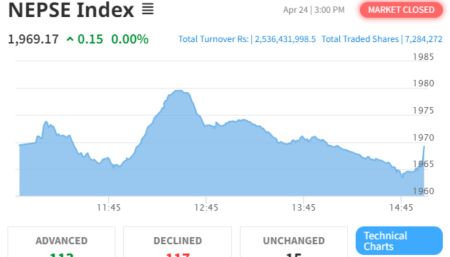--By Vaijayanti Khare
Growth is magic. It is the taste of success. It makes it easier to fund new investments, attract great talent, and acquire assets. But the environment for growth has been difficult for some time now.
What are the sources of corporate growth? If, like many executives, you take an average view of this question, the answers may surprise you because averaging out the different growth rates in an industry’s segments and sub-segments can produce a misleading view of its growth prospects. Most so-called growth industries, such as high tech, include sub-industries or segments that are not growing at all, while relatively mature industries, such as telecommunications, often have segments that are growing rapidly. Broad terms such as “growth industry” and “mature industry,” while time honored and convenient, can prove imprecise or even downright wrong upon closer analysis.
Any business, but most particularly a new or smaller business, that is not growing, skirts failure. Small businesses that are not growing constantly operate “on-the-bubble.” In other words, they generate just enough revenue to pay the bills and just enough profit for the owner to justify keeping the doors open.
A 5-pillar framework is suggested for plotting your growth, and is a relevant pointer to designing strategy and measuring success. And yes, Growth is different from Profits, of course.
Pillar One: The Customer Experience – Your customers do not buy a product or service. They buy the experience of obtaining that product or service from your business.
Pillar Two: Make a Profit – If your business does not generate a profit - it will fail. It cannot be simpler - learn to measure, create, sustain and keep your profits!
Pillar Three: Own a Business, Not a Job – If it cannot effectively function in your absence, your business cannot grow beyond you. To grow, you must own a business and not a job.
Pillar Four: Manage Systems, Lead People – Your business is a game, a serious game, but a game none-the-less comprised of steps and rules you create. These steps and rules (systems) are created to make current customers happy and get new customers. Employees are trained to play your game - to operate your systems. This enables you to lead them as a team, not micro-manage their individual actions.
Pillar Five: Make Time for the Business of Business – To grow your business you must have time to think about where you want your business to go and plan the path to take it there. By successfully building the other four pillars you will generate time for the “business of business” and, with it, the power to take your business to the next level.
When a company wants to grow, it has two options: expand its current business or go into business with other companies through acquisition or merger. If it chooses the acquisition option, it can do so in a way that strategically enhances its current operations through vertical or horizontal integration.
Contrary to horizontal integration, which is a consolidation of many firms that handle the same part of the production process, vertical integration is typified by one firm engaged in different parts of production (e.g., growing raw materials, manufacturing, transporting, marketing, and/or retailing).
For example, EMI, the developer of the first CAT scanner, should have forward integrated into specialized distribution and servicing, as producers of sophisticated medical equipment typically do. But it did not have these assets at the time, and they are slow and costly to build. General Electric and Siemens, which were integrated across R&D, engineering, and marketing, reverse-engineered the scanner, improved on it, provided more training, support, and servicing, and captured the major share of the market.
As companies mature, they often face declining growth as innovation gives way to inertia. In order to achieve consistent levels of growth throughout their corporate lifetimes, companies must attend to existing businesses while still considering areas they can grow in the future. Look to your Horizons – literally, the 3-Horizon framework to focus on when planning growth.
Horizon one represents those core businesses most readily identified with the company name and those that provide the greatest profits and cash flow. Here the focus is on improving performance to maximize the remaining value.
Horizon two encompasses emerging opportunities, including rising entrepreneurial ventures likely to generate substantial profits in the future but that could require considerable investment.
Horizon three contains ideas for profitable growth down the road—for instance, small ventures such as research projects, pilot programs, or minority stakes in new businesses. Making good choices about where to compete requires a truly granular understanding of market dynamics and of a company’s business performance. Opportunities will not always come in traditional or even familiar locales; indeed, from 2010 to 2025, almost 50 percent of global GDP growth will take place in approximately 440 small- and medium-size cities in emerging markets.
You cannot grow without reallocating resources. Even the smartest “where to compete” strategy will fail to bring results unless the company that develops it follows through with the strong resolve that can bring it to life. This is among the most challenging aspects of growing in a slow-growth environment. In such times, companies do not have the benefit of a rising tide to generate surpluses for new initiatives like pushing into new markets, acquiring existing businesses, or focusing on promising products or services.
While it is easy to agree that growth is imperative, it is not always clear how to achieve it. Managers are often uncertain whether the answer lies in expanding beyond the core. Businesses decay, and yesterday’s core may not be today’s or tomorrow’s. Getting free from a decaying business is different from investing in one with a strong potential. But the two perspectives may become linked through the reallocation of scarce financial and human resources. Companies must often let go of businesses that were once important and focus on up-and-comers. But it can be hard to jettison businesses that management grew up with or to accept that they cannot be turned around enough to justify further investments.
Capital-market pressures and organizational dynamics can make it difficult for companies to place big, long-term bets on the growth opportunities of tomorrow. And the bigger you are, the harder it is to grow.
All things said,outperforming the competition remains possible in all industries, even in sluggish economic times. But this takes discipline and a relentlessly granular analysis, as well as a commitment to seek the kind of growth that generates real and sustainable value, which is always the most important objective of all.
Vaijayanti Khare is known for her dynamic engagements in the corporate, academic, social and development fields in Kathmandu over the past decade. Her writings are a reflection of her hands-on work, insights, studies, success and challenges.






















